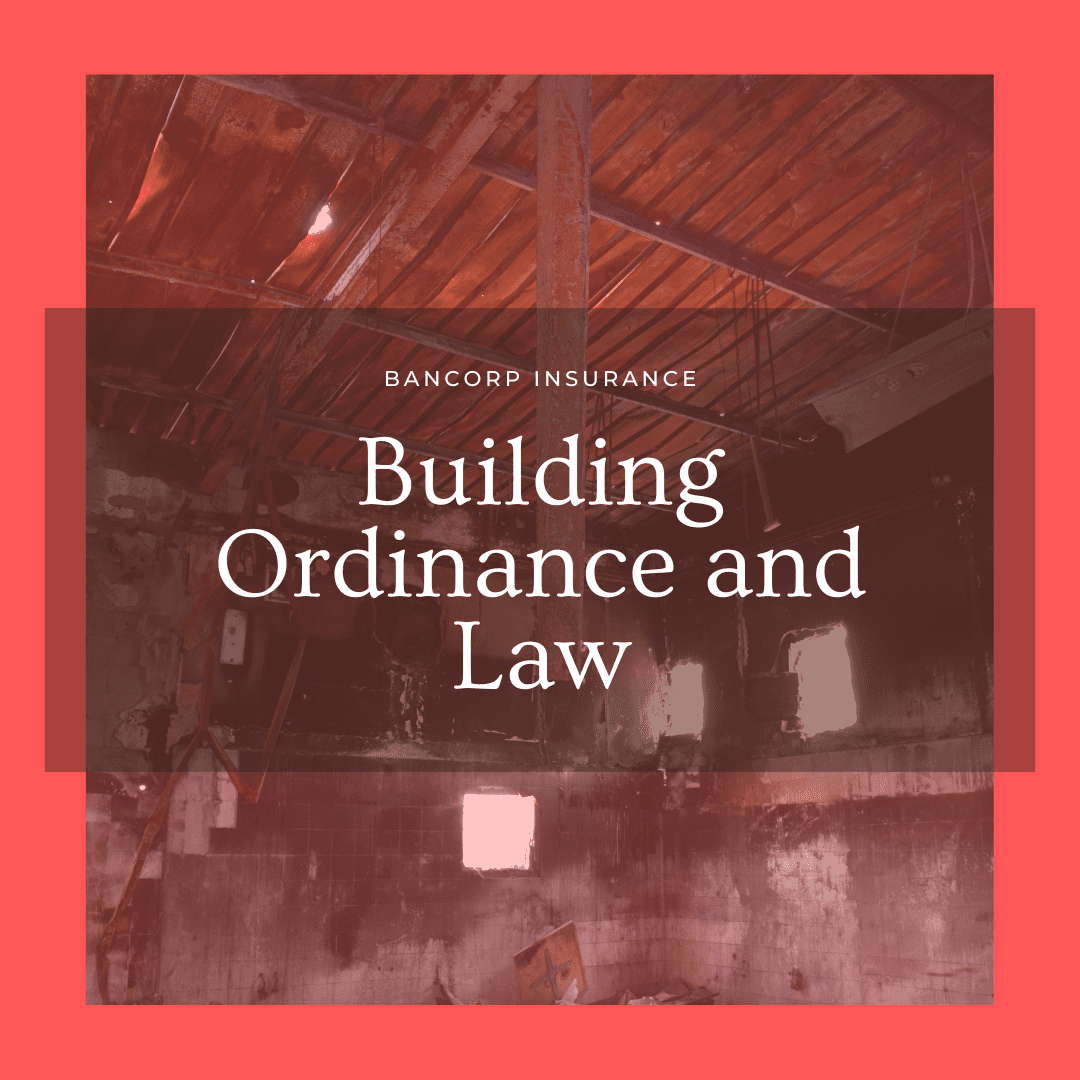Building Ordinance and Law

Listen to the Podcast with Rex and Cheri on Business Ordinance and Law
When you talk about property insurance and someone says we’re going to replace your property and they give you replacement cost coverage, there are some real nuances to that. One of the things that they’re going to not do, is bring your building up to the current code. So if your building is 40 years old and it doesn’t have, up to date bathrooms in it, or say electrical or plumbing the company is going to try to replace this infrastructure with like kind materials. Which is not necessarily up to code with current building requirements.
Let’s say the item to replace are windows, and you have single pane windows currently in it. The insurance company’s going to say, we’re gonna replace with like kind and quality. And if you have, single pain windows, they’re gonna replace it with single pane windows. If you have a bathroom that isn’t ADA approved, they’re gonna pay to have a regular bathroom put in. However, the city will not be allowing this as it doesn’t meet current building code. So, you would have to come up with the additional funds to pay for the ADA compliant bathroom.
What Does Building Ordinance and Law Do?
So, when we’re talking about fixing this problem, we use a coverage called operation of building ordinance coverage. Now operation of building ordinance coverage has a provision where you can actually tell the insurance company that you expect to have to pay X, Y, Z money, extra over and above the replacement cost to allow for replacing with like kind and quality actually pay your claim.
Most business owners don’t think about this when they buy or rent a property as it might not seem like a 40 year old building is so out of date. But, anything older than 20 years really is out of current code requirements. And, obviously a brand new building is built to the current code.
Now there are other nuances that go along with this kind of coverage, and there are basically three parts to an operation building ordinance coverage form. The first part is to pay for the undamaged portion of your building. Now here’s a problem, and most people don’t realize this could be a problem, if you have a building and 60% of it is destroyed in a fire. Which is very common as the fire department does a very good job at getting fires out quickly. The insurance company is not obligated to replace or repair any portion of the undamaged portion of the building.
So, you proceed with the repair and along comes an engineer. And they look at the undamaged portion of the building and say, you know, we’re not gonna let you rebuild. You have to tear this building down and start over. You just can’t cut off the black bits and repaint the parts that aren’t damaged. But the county, the state, the city, wherever you’re at says, nope, it’s a instructive total loss.
Well, that’s fine. You go to the insurance company and say…Hey, insurance company, I gotta tear the building down. And they said, well, you know, our contract says that we’re gonna pay for the damage to the building caused by the fire or the wind or the hail or whatever the, the peril was. But you say, well, I gotta tear it down and I need the money to both, tear it down and money to replace the part of the building. The insurance company is going to say, no, you needed different coverage for that. So, when we were talking about these nuances in commercial property insurance, we talk about adding operation of building ordinance and law coverage and there are three primary coverages.
What are the Three Primary Coverages of Building Ordinance and Law?
The first coverage is to pay for the undamaged portion of the building. So if you’ve got a million dollar building and it’s 60% destroyed. The county’s telling you to destroy $400,000 worth of property. And the insurance company is saying, sorry, we won’t cover that.
The second part of the coverage is demolition. This goes back to the partial damaged building. If the building is saved partially but you are still required to tear it down due to county ordinance, this coverage will help you get the undamaged property demolished and removed.
The third part is paying to bring the building up to code. This is where we started this, this conversation. So, we’re kind of back to where we started. So, we’re going to need to pay to have this building brought up to code, which could include earthquake proofing the building. Well, there’s no earthquake proofing, that’s extra, there’s windows and doors and sanitary requirements with a bathroom, ADA bathrooms and ADA ramps and all the things that you know are going to need to bring a building up to code.
So, if your building is not “new” or over 20 years old this is coverage we need to talk about building ordinance and law coverage as part of your business insurance package.
Bancorp’s insurance experts are available to provide you with a free review and consultation. Contact Us – Bancorp Insurance Call 800-452-6826
Disclaimer: This content is provided for general information purposes and is not intended to be used in place of consultation with our agents.







